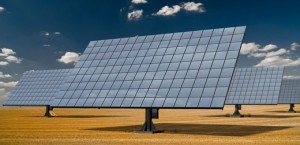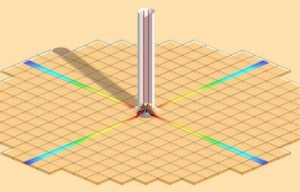While there are many methods of converting heat energy into electrical energy, they’re typically inefficient (thermoelectric) or need to be done at a larger scale (steam turbines). Researchers at the Hong Kong Polytechnic University are showing promising results with a different approach. You see, the atoms in a liquid are in constant motion. They found that when copper ions collided with a strip of graphene immersed in a solution, the collision dislocated an electron out of the graphene, and it then traveled through the graphene strip, essentially replicating the function of a battery and illuminating an LED as a result.
As with any science, further tests are needed to verify the reaction and rule out secondary effects being responsible (such as chemical reactions). If validated, though, this has enormous potential, for it would enable the generation of electrical energy from any heat source (something planet has no shortage of). It’ll be interesting to see if this pans out.
Read more here.



